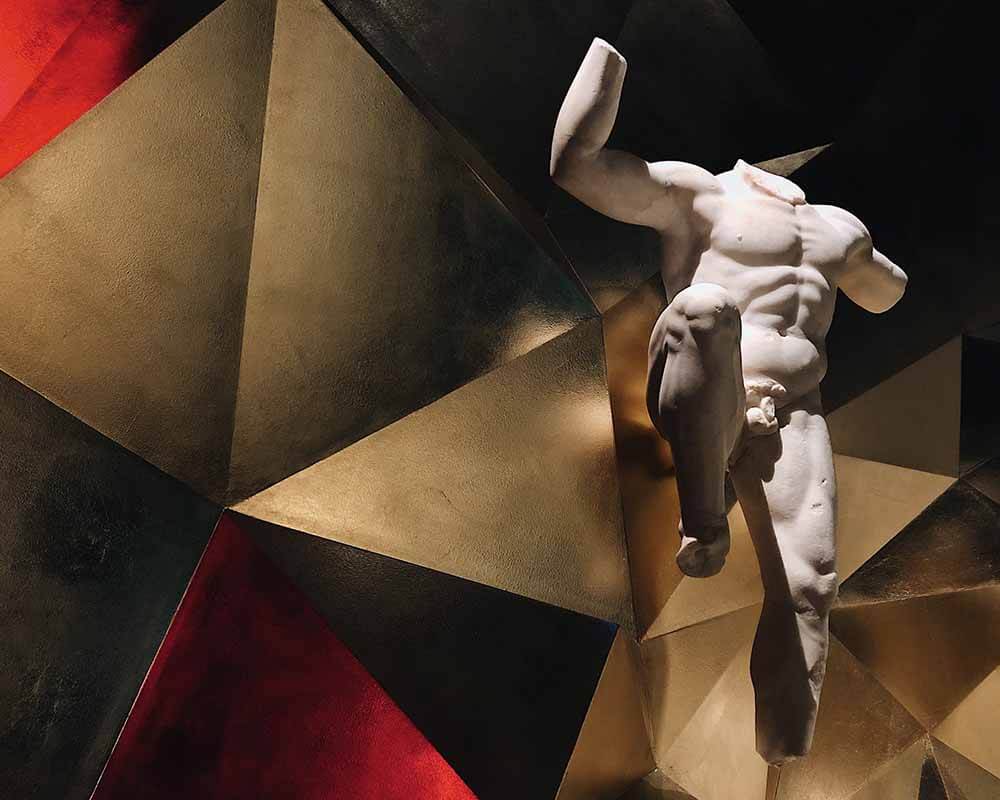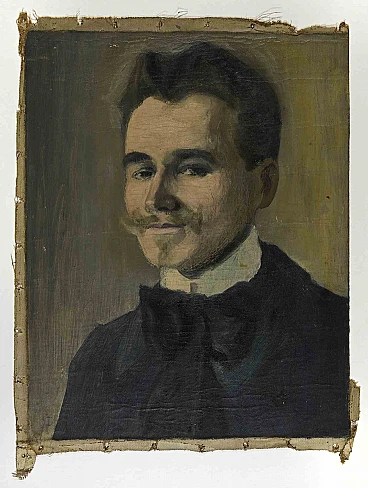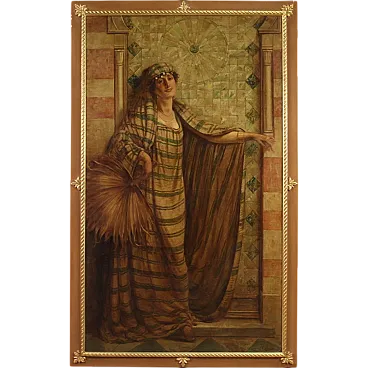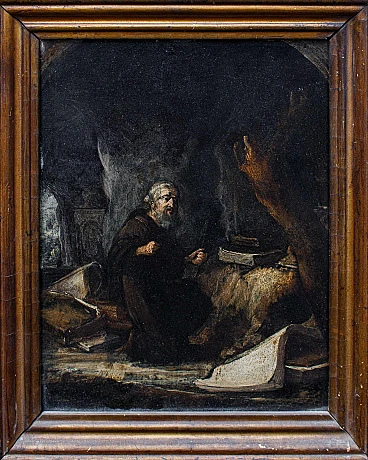Clark Van Clemenson (1910- ?), Isola bella sul Lago Maggiore, oil on canvas, 100x160 cm, with frame 122 x 182 cm, signed lower right C. Clemenson. This painting shows a splendid view of Isola Bella, one of the so-called Borromean Islands, reflected in the waters of Lake Maggiore. In the foreground is the small beach to which two small boats are moored and the scene is animated by a girl, the only human presence in the entire painting. High snow-capped mountains embrace the island and the lake. The oil on canvas is, as can be deduced from the signature on the bottom right, the work of the painter Clark Van Clemenson, born in Johnstown, Pennsylvania in 1910. The date of death is unknown. Until 1630, Isola Bella was a rock inhabited by fishermen, with two small churches and a few vegetable gardens. The Borromeo family, who had already owned Isola Madre since 1501, decided to concentrate their interests on this new little island from the first two decades of the 17th century with Julius Caesar III and Charles III, initiating the grandiose project that would lead to the creation of the Palazzo and the Italian-style garden, clearly recognisable in the painting. The Borromeo Palace, whose 80-metre-long façade dominates the north end of the island, was built throughout the 17th century and has a T-shaped ground plan with a curved projection in the centre at the hall of honour. The surrounding garden was built from around 1631 to 1671. The Teatro Massimo, visible in the distance behind the Palazzo, is the most important monument in the garden of Isola Bella: statues, obelisks and fountains blend perfectly with the vegetation of the ten scenic terraces, at the top of which stands the statue of the Unicorn, the heraldic symbol of the Borromeo family. The pastel tones used by the artist instil in the viewer a sense of quiet, calm and inner peace, making the island a sort of locus amoenus. The pictorial rendition is particular: the small beach in the foreground as well as the foliage or the snow-capped mountain peaks are characterised by an extreme pictorial materiality, so much so that the colour in these points is not perfectly spread but rather deliberately left in relief, giving a particular texture to the painting. Other portions of the painting such as, for example, the mirror of water or the boats are treated by the painter by smoothing the colour and juxtaposing it with brushstrokes or palette knife strokes without describing them in detail but rather allowing the image to define itself from a distant view of the canvas.

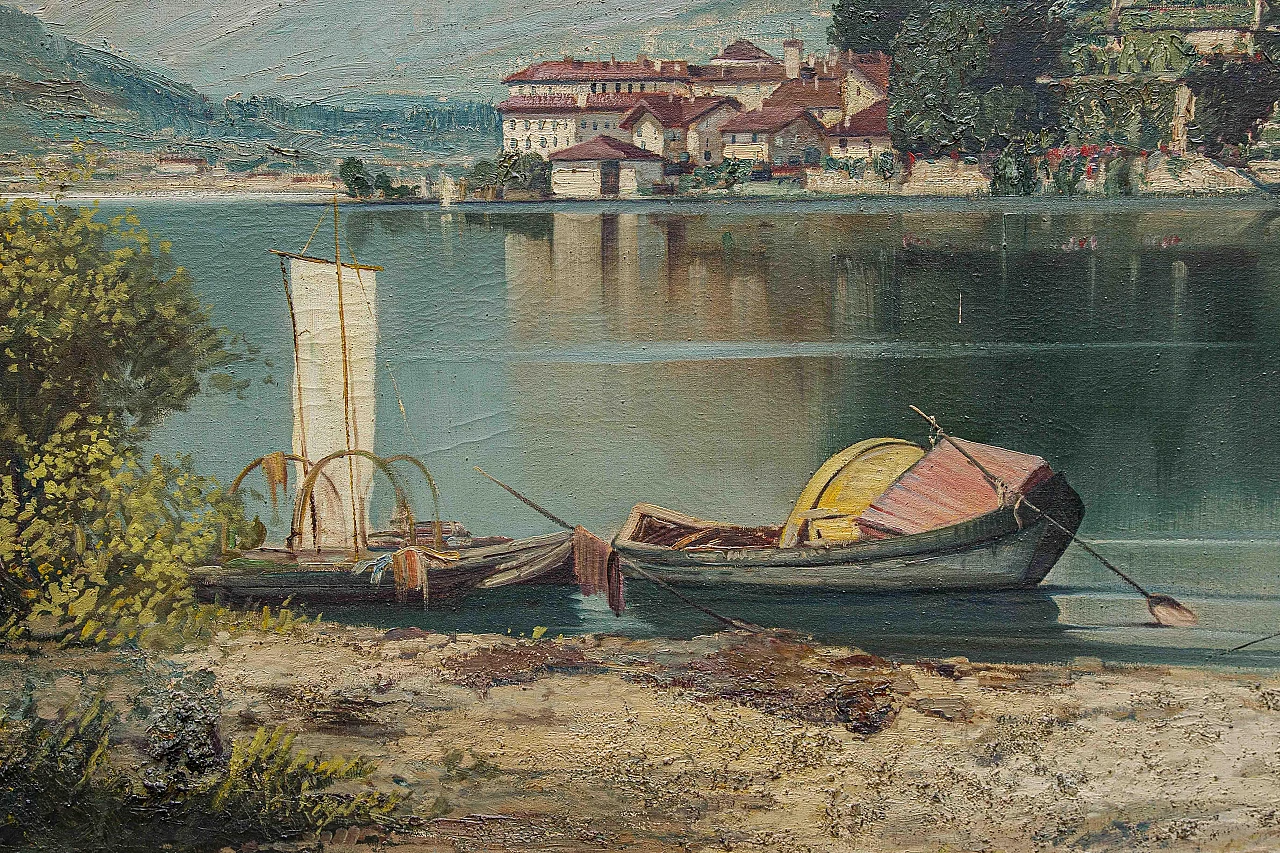





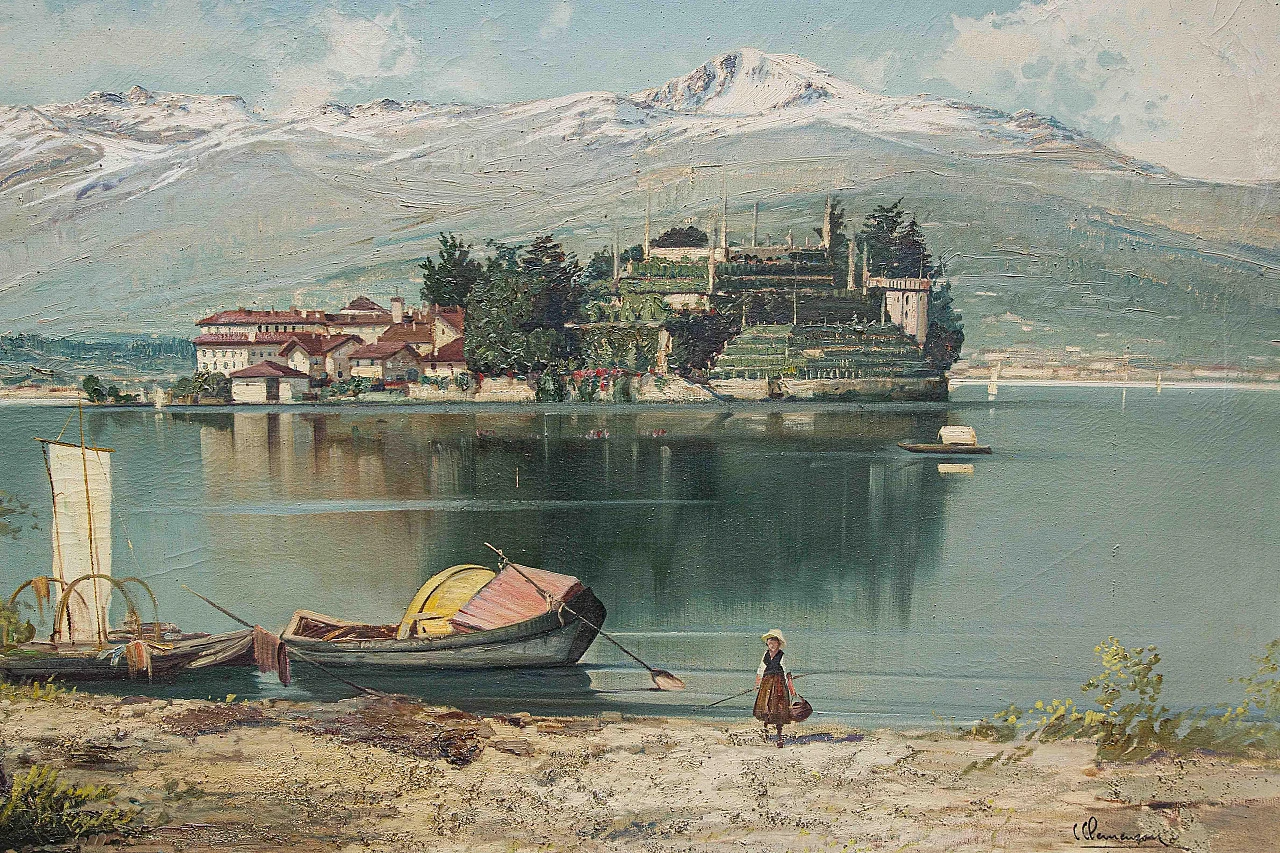


 SILVER Seller in Milano, Italia
SILVER Seller in Milano, Italia






.png)


